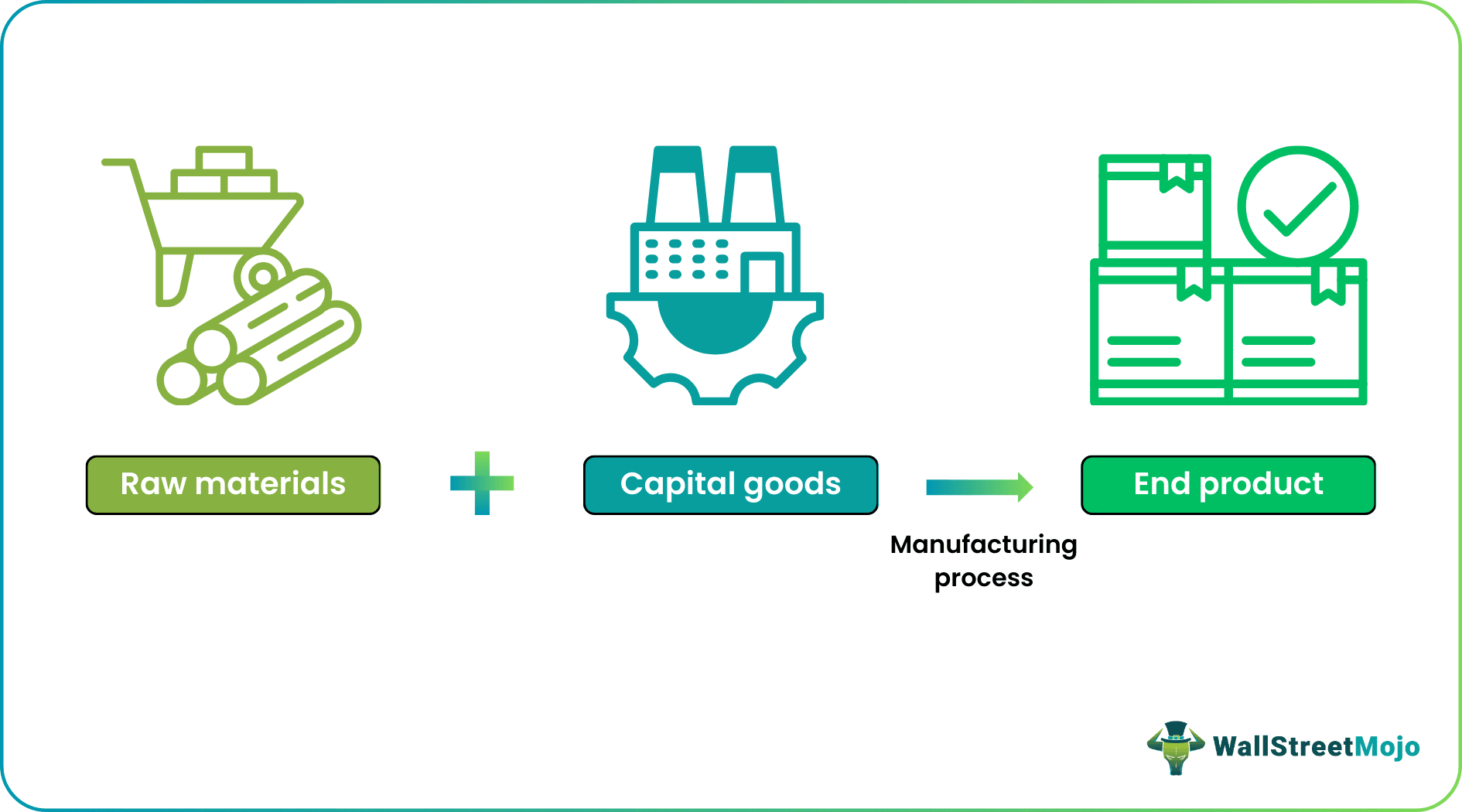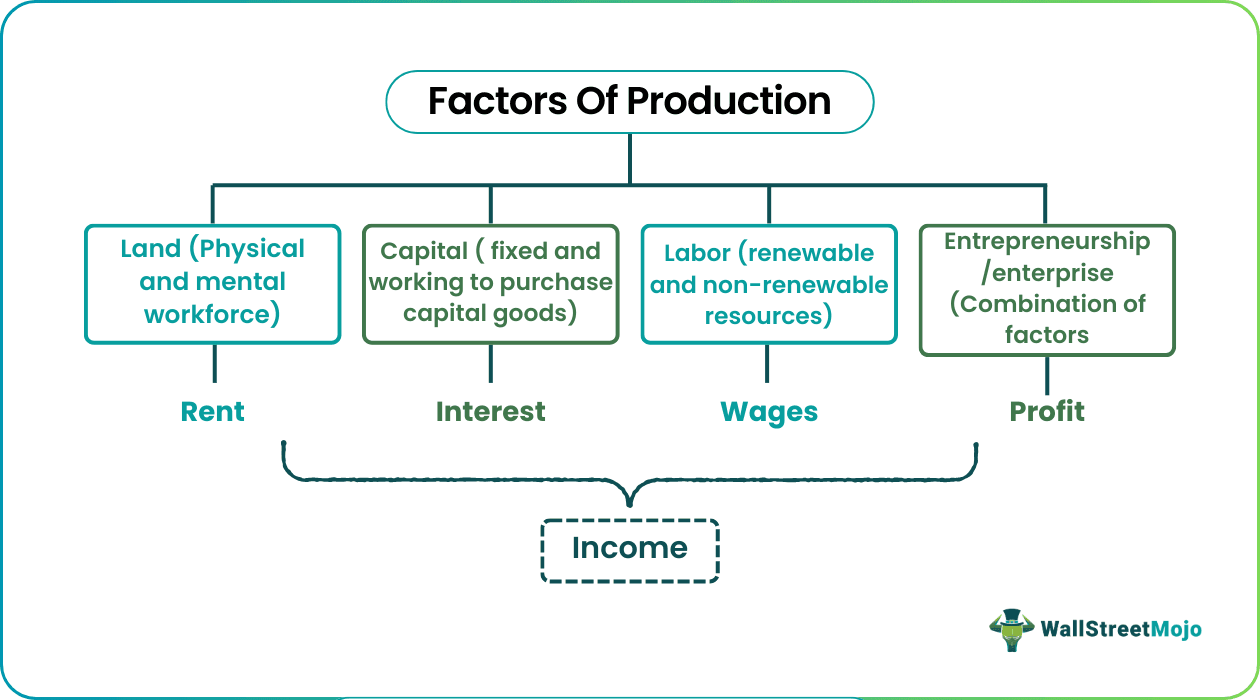Table Of Contents
What are Capital Goods?
Capital Goods are man-made assets used in the manufacturing process of a product. They are used to produce the final goods that people consume in daily life. They are one of the four factors of production- the other three being natural resources, labor, and entrepreneurship.
Capital goods are physical and durable assets like machinery, tools, buildings, plants, electrical equipment, mining equipment, printing and packaging equipment, vehicles, etc. They differ from consumer goods which are readily available for consumption. They are tangible assets and experience depreciation in value after a certain period.

Key Takeaways
- Capital Goods are fixed assets used to make other goods or services that are directly consumed by end-users.
- Investment in capital assets is crucial to increase the rate of production, avoid room for errors and accidents as well as save time.
- The capital assets industry plays a significant role in the growth and well-being of the economy by paving the way for innovations and generating employment and revenue.
- A business or firm needs proper acquisition, operation, and maintenance strategies for managing its capital assets without losses.
Capital Goods Industry Explained
The capital goods industry refers to a group of companies that manufacture and distribute machinery and tools. Other companies use these machines and tools to make their own products.
The capital goods industry sector of any nation is closely related to its prevalent economic conditions. If the demand drops for a specific product, the related capital goods chain also faces a similar decline. Therefore, demand for capital assets is a sign that businesses and the economy itself are flourishing. The introduction of a new product in the market can boost the industrial sector. A thriving industrial sector can create a large number of employment opportunities. This is because the introduction of new capital goods can create a demand for a skilled workforce.

Capital Goods Examples
Capital goods are an integral part of every business. For example, take the case of a dinner dress. A consumer buys a beautiful dress from the mall. The dress is the final product or finished good that goes through various production processes. It needs raw material in clothes, production units to manufacture the dress, machinery to stitch the dress, storage units to store the goods, and vehicles to ship the final product. Each capital asset involved in the process requires another set of capital assets for their production. For instance, the shipping vehicle is a capital asset that needs its own machinery, equipment, and manufacturing unit.
The production of a capital good can incite the production of many other innovations and even change the course of industrial history. One example is the invention of the airplane by the Wright brothers. The airplane revolutionized worldwide travel, which paved the way for a plethora of other innovations and global communication.
Acquiring Capital Goods
A firm or business acquires capital assets after rigorous planning. A Committee called Capital Review Committee oversees this acquisition. These committees check on proposals, investors, and lenders to settle on the best. The cost of capital is a primary concern that arises during the acquisition of new capital assets.
Importance
#1 - Increased Productivity
Manual work is tiresome, time-consuming, and is prone to errors and accidents. Machines allow you to produce a large number of goods in a very short time span with zero room for mistakes. As the efficiency increases, the rate of production shoots up, generating more goods.
#2 - More Rewarding
Right investment decisions enhance the growth of a business. The returns one gets from investment in capital goods are way higher than the Cost of Capital. This improves the investor's confidence, encouraging them to invest more.
#3 - Boost Company Equity
More production and sales increase the company's revenues. Through the proper utilization of available tools, one can maintain shareholders' equity. The company just has to ensure that its assets are in workable condition.
Management of Capital Goods
Every capital asset has a productive economic life of several years. For maintaining operational efficiency, the capital assets must be in good working condition. The total cost of maintaining and operating the asset for a company should not exceed its earnings. If the cost of expenses on an asset is more than returns, that asset is above its economic life. This is why proper asset management is important.
A firm must measure its asset performance periodically. Hence, any underperforming asset requires an upgrade, disposal, or replacement. The firm must, therefore use a systematic approach to manage its assets to avoid heavy losses and risks.
How Capital Goods Help the Economy?
The role of capital assets in an economy is vital. They have importance in increasing the economy's productive capacity in the long run.
Developed countries like the USA embrace introducing and producing new capital assets like machinery. It makes work easier and increases opportunities. It has also led to the growth in technology. As a result, skilled people have been employed, leading to poverty reduction. In the long run, it boosts the economy by supporting both the private and public sectors alike.
The parallel contribution of different sectors is important for the growth of an economy. The capital assets industry brings together these sectors to create assets that can be used to make products and finished goods. Eventually, when the products hit the market, they are sold to the customers. With proper marketing, the companies end up making profits. The government earns tax, and all these factors charge up the economy.
Capital goods are a crucial component of the industrial sector. Production efficiency is vital for manufacturing processes, which require fixed assets.
Frequently Asked Question (FAQs)
The machinery, buildings, tools, and equipment used to produce end products are capital goods examples. The computers, offices, printing equipment, chairs and tables, hand equipment for service sectors, etc., also come under the examples of capital assets.
The industry sector that produces capital assets is called the capital goods sector. They play a vital role in maintaining the balance and growth of an economy. Therefore, the demand for new capital assets is an indication that an economy is doing good.
A capital goods company is a company that is involved in the production of new capital assets. They produce goods that can be used by other companies for the manufacture of products. These products can be capital assets themselves or the finished product that is brought to the consumer.
